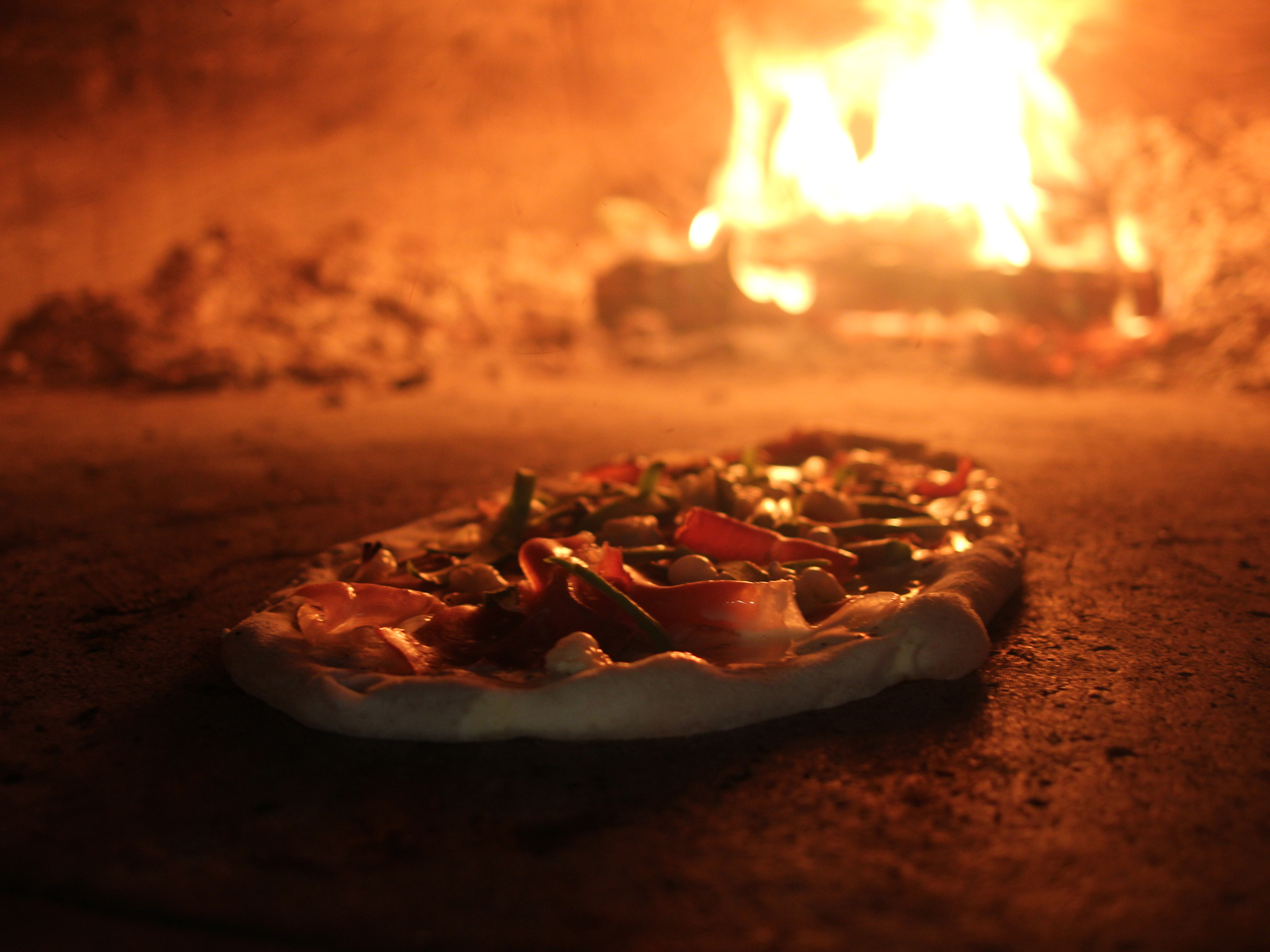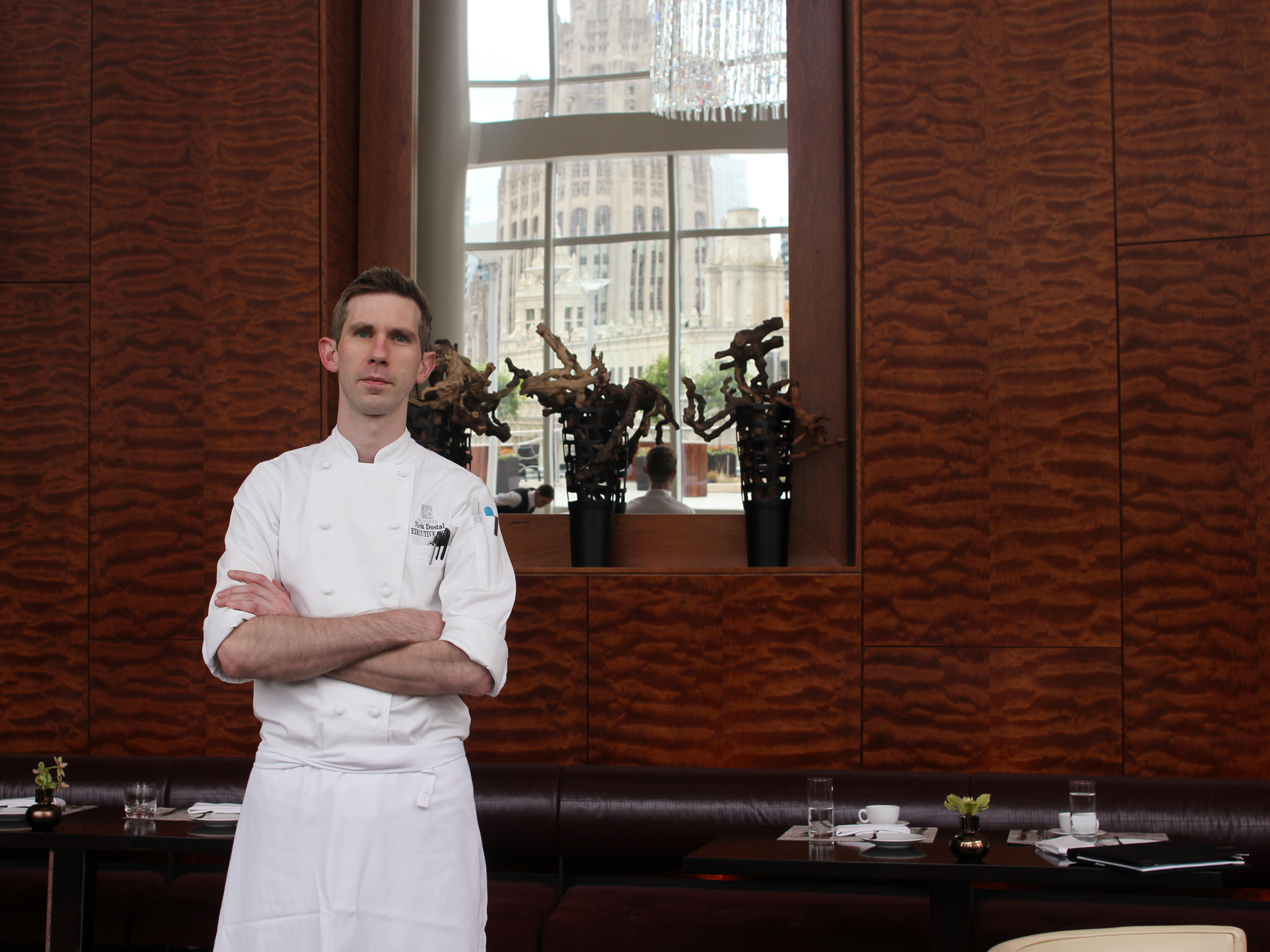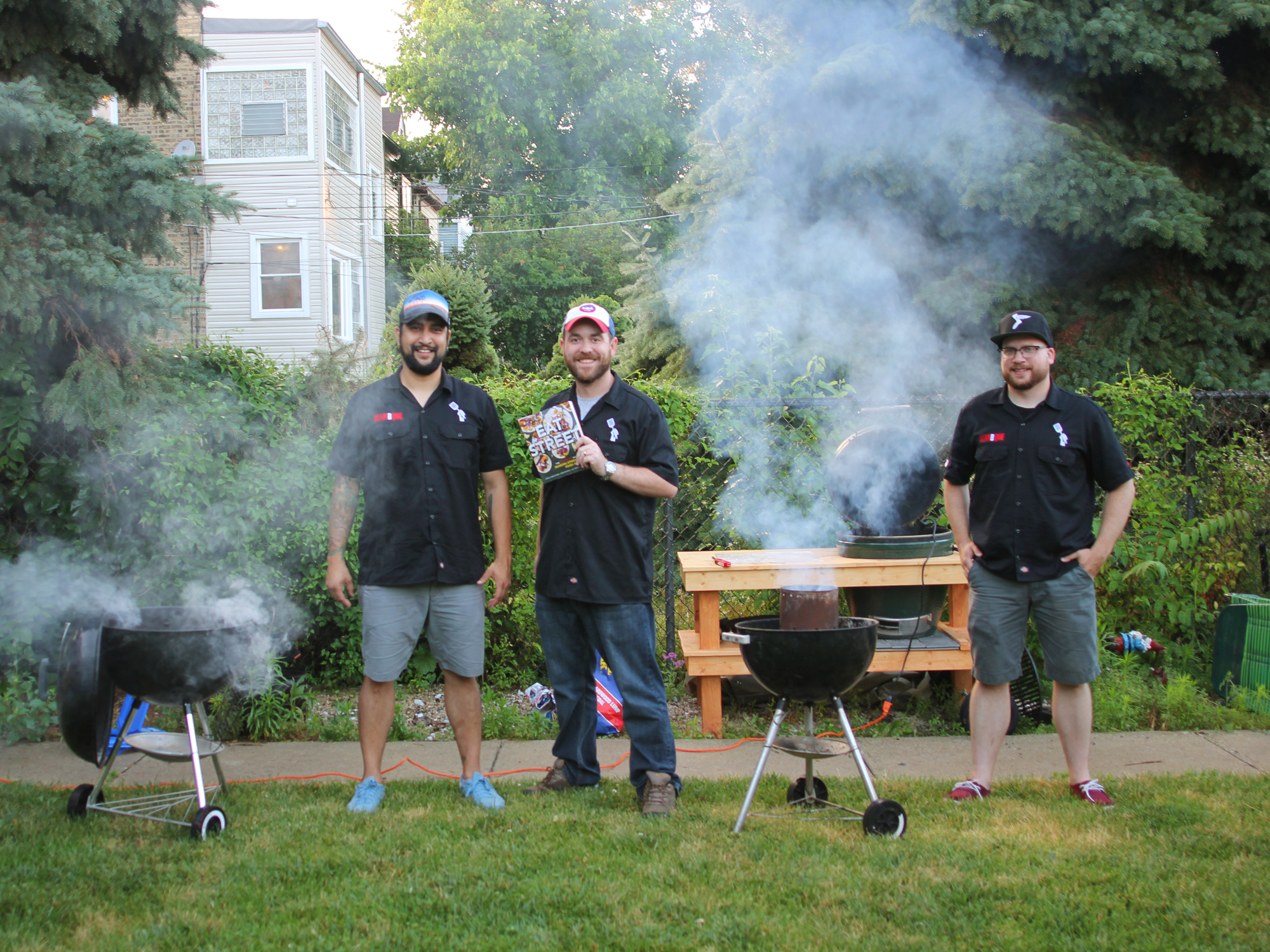IN SOME WAYS THIS IS THE LEAST food and drink-oriented piece I’ve published at Fooditor; in other ways, it could hardly be more deeply-rooted in those subjects. It started when Jenn Galdes, a longtime Chicago publicist and friend, contacted me about another old friend’s project. It had the word “craft” in it, so I assumed it was a beer story.
Well, it is, but it’s also about a whole movement in America today—call it the craft renaissance, call it the maker movement, or artisanal or sustainable or hipster or whatever the term in a particular field is. Fred Bueltmann, an author and longtime beer guy in Chicago who’s now Vice President of Brand and Lifestyle at New Holland Brewing Company in Grand Rapids, and Kyle Bice, a Chicago-based illustrator who’s designed some of New Holland’s labels, set out for a month by train to discover the variety of craft culture in America, and to chronicle it in various forms—writing, videography and more—at the website This Craft Nation. (There will be a book, eventually, but watch the site between then and now as they release material from their travels.)
What’s interesting to me is that they root much of the craft and maker movement in the food and beverage revolution over the last two decades, and find a lot of commonalities between making better beer or bread or cured meats and working with leather, or steel, or vinyl (they visited Jack White’s Third Man Records in Detroit). It’s an interesting look at an overall shift toward consuming things that are, to use some of their favorite words, more authentic, more personal, made not by big companies but by people in whom you place some measure of trust. It’s a lot about food and drink, even when it’s not.
We met at The Bad Apple in Lincoln Square—chosen for two perfectly crafty reasons, its excellent beer list and its famously artisanal burgers—who were kind enough to let us take over the side room as we chatted:
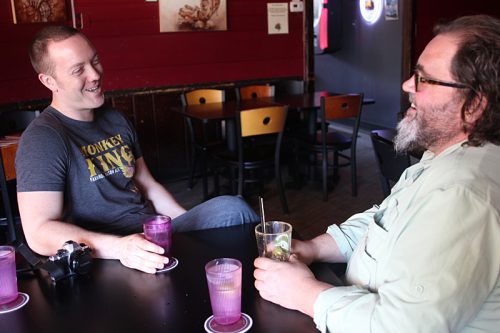
Kyle Bice and Fred Bueltmann
FOODITOR: When Jenn first mentioned this project to me, I assumed “craft” meant I’d be writing a beer and spirits story. And it’s much broader than that, but it also is kind of a beer story—tell me about that.
FRED BUELTMANN: Well, that really speaks to the inspiration for the project. I have a 25 year beer and spirits career, and get asked a lot about what used to be microbrewing and is now craft brewing. Along the way I’ve done different projects, and one of them was writing a book called Beervangelist’s Guide to the Galaxy. It was a beer and food book, it was also a call to seasonal eating, and kind of a broader lifestyle book in general.
And I found myself getting deeper into this cultural shift that goes beyond beer. I was looking at the word “craft,” and you know, it’s not just this category of beers, it’s part of this connected lifestyle that we’re moving towards. So as I started thinking about what my next book would be and what I wanted to express to the world, I wanted to give more daylight to what I thought people should be paying attention to, that this connected lifestyle is broader than any given category and we’re growing in it everywhere.
How’d you get involved, Kyle?
KYLE BICE: Fred was pretty much my boss at New Holland as a freelancer, and we developed a really good dialogue. Not so much hey, I’m your boss, as let’s talk, let’s figure this out, make sure that you as the artist are happy doing the illustrations that we need for our beer labels. And over the years we did a couple of these road trips together for Carhartt, where we went cross-country and we traveled for two weeks at a time. And we developed this better, deeper friendship that planted the seeds for what we’re doing now.
Storytelling became a huge thing for us—it already was for Fred, but it really settled in my soul. I wanted to become a better storyteller and I was really interested in hearing other peoples’ stories and becoming a better listener, and a better teacher. New Holland was definitely part of that, but I wanted to do something outside of the beer industry, I wanted to do something outside of cocktails, I wanted to talk about craft, completely, and all the various versions that go into craft.
So what’s the connection, philosophically, between people who are making beer or spirits, and a guy who’s working with leather, or welding, or whatever it may be?
FRED: I think the connection is the word “connection.” The craftspeople themselves are making things because they want to be more connected to the ingredients and to the final product, and they believe it should be done a certain way. And they want to raise the bar of quality, and the way they can do that is to know the process.
Typically you see people start one place, and they go farther and farther back in the stream. To where they can validate the core ingredients, or maybe they can raise the ingredients. It’s like a cook becoming a gardener, because they wanted to get in touch with the produce, instead of just cooking out of a recipe. We see that in almost every trade, in that pretty soon the woodworker is sourcing the wood a different way.
The maker wants a connection to their work, and the consumer wants a connection to the products that they’re buying, they want a higher level of trust. They want to know the “who,” and maybe the “why” and the “how.” They don’t necessarily want to become an expert in stainless steel, but they know that if they trust this maker of a straight razor, who is an expert in stainless steel, they can place a higher value on this thing that’s made by somebody who cares.
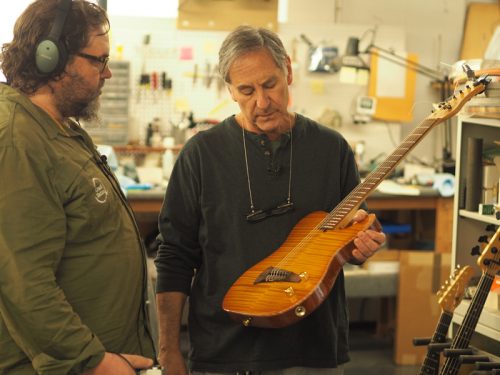 This Craft Nation
This Craft Nation With guitar maker Roger Sadowski
So in every category up and down the chain, whether they call it craft or something else, independent or hand-crafted, sustainable—you know, different industries have different terms. But the commonality is about connection and trust and prioritizing quality over convenience.
And you believe that started with beer?
For me, I started selling beer in Chicago in 1991. And the growth we’ve seen in the diversity of choices in beer, diversity of makers, quality, integrity, both brewers and distillers using better ingredients… There was a political climate in the city that I don’t think thwarted consumers having more choice, but it thwarted producers. And that’s changed.
There’s never been a better time for the consumer to eat and drink. There is some chaos, and there is some confusion in a crowded marketplace like this, there’s some political climate in terms of brewers being bought and sold. But if you look at the consumer, they have choice. The customers are smarter, more informed, more passionate, and they demand authenticity. The beverage movement put that into the forefront in a very visible way.
Yet we just had news about Wicked Weed selling out to AB/InBev, and Heineken buying the other half of Lagunitas—are we going to be down to three big brewers again before too long?
I don’t know. It’s a complicated issue, and a frustrating issue to me, mostly because of the transparency involved. I think it’s actually the intention of these large brewers to confuse the marketplace, so people stop having the ability to delineate between craft and non-craft. That if they stir the pot enough, consumers say, “Ehhh, I can’t keep track of that stuff, forget it.”
But I think independence is important to the consumer. It’s not an absolute, it’s not important to all consumers. But what I wish for, I think it would be great for the owner of those brands to have to self-identify, to be on the label on there somewhere so the consumer has a fighting chance of knowing who they are. I think that’s a theme we saw, the independents, the craftspeople, are fighting to be able to continue to keep a connection to the consumer.
None of us are able to make that choice in every single thing we buy, but we value it more when we do, and beer brought that to people faster and louder than any other product. Coffee, probably, would be the closest to beer in terms of the amount of press, and the visibility of that change happening.
Do you find that people cross the lines between a lot of these different subcultures? Because for instance, there’s a maker studio not far from here, which I found out about because of a ManBQue event there, to which guys were bringing their homemade sausage and their homebrew. Which all seemed like natural combinations.
KYLE: The other day we did an interview with a bike mechanic who builds leather saddlebags in St. Paul Minnesota, Cayley Baird, and we asked what she saw the connection being. And she said in any big city, you see a lot of cyclists who are in the maker scene in a lot of different ways. The maker scene is not just somebody saying, hey, I want to find out how to build one thing. It’s this cyclist who’s like, I want to work on my bike and bike to the farmers market and talk to the farmers. That, in turn, leads them to whoever’s making craft spirits down the road.
FRED: Industrialization tends to make the market more anonymous. So these products—you know there’s a label but you don’t have an expectation of knowing who made it or being able to ask them a question.

What we’re finding is that there’s this mixture, where we’re using the tools of industrialization, the tools that came with technology. And a high level of skill about how to use those tools and apply them, and how to use the internet to learn. And then they’re integrating that with the original materials, the core ingredients.
And part of that is transparency. The person who is into cycling, and being self-powered, and they ride their bike to the farmers market—they want to buy one of Cayley’s bags because they know Cayley made it. I know who this person is, I heard about it from a friend. They trust it more than a bag off the shelf.
I think it’s actually the intention of these large brewers to confuse the marketplace, so people stop having the ability to delineate between craft and non-craft.
You’ve been going around the country. Do you see any particular regionality to what’s being made where?
Well, by the nature of this project we circled the country in 33 days, so we’re skimming the surface—we’re getting things that fit a gap for our project. So we couldn’t tell you what every region is doing in total. But we definitely have a sense that this connection to tradition tends to express more regionality.
You see the influence of where people grew up, and who they hung out with, and that personality comes out. Sometimes it’s literally about where they’re sourcing things, and sometimes it’s how they’re expressing themselves. That personality is what I think we all missed in the commoditization of things—we got this sameness that stripped away the personality of the products we consume.
KYLE: And I think there was a cool thing that we noticed. East coast, wherever we went, there was a lot of tradition and a lot of old architecture, things that were inherent to that community and people were used to the tradition staying alive. Where in the west, you have people who haven’t been there quite as long. And those people on the west coast are definitely seeking to create those traditions. They’re going back in time a little bit harder, a little more in-depth—
FRED: There’s also a lot of reclaiming of space, of equipment, of infrastructure—so whatever industry was in a community has lasting influence even in its absence, because people are taking over old production facilities or old warehouses. It tends to be the signature of an area, like the brewery district in San Antonio, and creative people are working with that as an ingredient.
 This Craft Nation
This Craft Nation Interviewing the owner of Victory Hemp
We were at Victory Hemp Foods, outside Louisville, Kentucky. They’re really on the cutting edge of using hemp, which is still a controlled substance. He’s in an old food processing facility that used to make fillers. Used to be part of the problem. And finding all this old equipment, and—I mean, nothing’s built for hemp. It hasn’t been legal. It’s legal to import but not to make. So he’s converting all this equipment that used to be used for evil, in our food-world view, and he’s using it for good. And there’s people alongside him in the building who are using the fibers from the hemp instead of the seeds, to make really strong fabrics. So here’s this old infrastructure all working together in a new way.
Well, that makes me think of The Plant here in Chicago, which also brought a bunch of different businesses together in an old meat processing building and they’re interconnected in different ways. What have you visited in Chicago for your project?
This morning we met with Melissa Flynn of the Green City Market, and we talked about the growth of farmers markets—what they are for the community, what they are for farmers, what they are for changing food awareness of the next generation and getting kids in touch with food and ingredients. Then we’re continuing on to Heritage Bikes, who are making bikes here, and we’re talking to Meegan Czop of Great Lakes Yard, who’s reclaiming and reusing a lot of materials here as a builder. And this afternoon we’re talking to Green Star Movement, which does mosaics, public art and community building.
KYLE: We talked to Michael last night—
FRED: Michael Roper, at the Hopleaf, and his role as holding space for all these makers in the beer world. Kind of what you were talking about, how does he navigate who lives up to their quality standards. And what’s the role of the tavern in our American cities? The neighborhood tavern is crucial to building community. And then talking about how he’s translated those values into opening a kitchen and continuing to grow his business, but really continuing to be a steward as well.

There’s a common theme of giving and contributing, rather than just harvesting and mining. Mining is taking the valuable things away, and then moving on to the next spot. And I think that a lot of these people are really fiercely committed to restoring—whether you’re talking about ecologically, or just human comfort and support.
KYLE: On the very last leg of our trip, as we’re hauling back from Minneapolis on Amtrak, Fred and I sit down to lunch, and you know, you get seated with whoever you get seated with, and it’s this retired teacher and his dad. And they ask us what we’re doing and we tell them about our project. And they say, “Well, we’re on our way to Chicago, we’re going to see a Cubs game with my son who’s flying in for this, my son loves beer, where should we drink, where should we eat—“ Well, of all the people they could have been seated with, they got the best possible ones to answer those questions.
It was that really cool connection that is definitely part of the craft scene, where it’s not drink the big brand, but go to this place, ask for this guy, and you’ll have this great experience.
FRED: Craft is conversational. We’re back to waxing poetic about the things we like. Beer was a really good poster child for the value of coming together and taking time. It’s not just commerce. People coming together over a beverage or a meal—this is quintessential to what our humanity and culture is about.
Craft beer, followed by craft spirits—they have been a beacon for reminding people that taking time to enjoy things is invaluable. Taking time to enjoy things is important. Recommending something you like to a friend is a social gift that can happen any day and doesn’t cost anything. This is social fabric that I think never went away entirely, but it did get marginalized at times.
Okay, one last question. Tell me the oddest, most out-there thing you’ve seen on your travels that someone is making a business out of.
KYLE: For me, and don’t get me wrong, I love these guys, but both because of their name and what they’re making, it’s Zombie Tools out in Missoula, Montana. It’s an awesome little town that I’d never heard of, and these guys are making swords and axes and knives, it’s equal parts medieval and Mad Max mixed together.
And you’re like, how is this craft? But they love what they do and there’s a lot of artistry behind what they do—
FRED: They’re making knives from sheets of steel, there’s no messing around. They’re designing them, and having them cut, and hand-grinding, and it’s from nothing to something. They have these, I don’t know, three foot swords—
KYLE: Oh yeah, easily. And when you say odd, that’s definitely odd. When you think of makers you think of beer, you think of spirits, but these guys are amazing and they’re doing a really good job at what they do. It was a really cool story to see how successful they’re being at their particular thing.
FRED: Again, it comes down to authenticity. There are swords that are made for decoration, but in terms of a maker point of view, their point of view is, if we’re going to make a sword, it’s going to be a well-made, legit sword. It is light-hearted in its badassery, but it’s also legit. People connect with that authenticity. Authenticity, craftsmanship, personality—all these things that make up these other products that we talk about.
 This Craft Nation
This Craft Nation Kyle’s mighty sword fells two beer cans
They enjoy the personality of it. They’re self-proclaimed pirates. After the interview, we’re out back playing pirate pool, which is where they set beer cans full of water on a table, and you have to slice them in half with a sword, and you only get points if you slice at least two in a row. You should feel what one of their swords feels like slicing through cans—
KYLE: It’s amazing.
Michael Gebert hand-crafts every pixel of Fooditor like editors in the old days.
Latest
Join the Discussion
After you comment, click Post. If you're not already logged in you will be asked to log in or register with Disqus.





